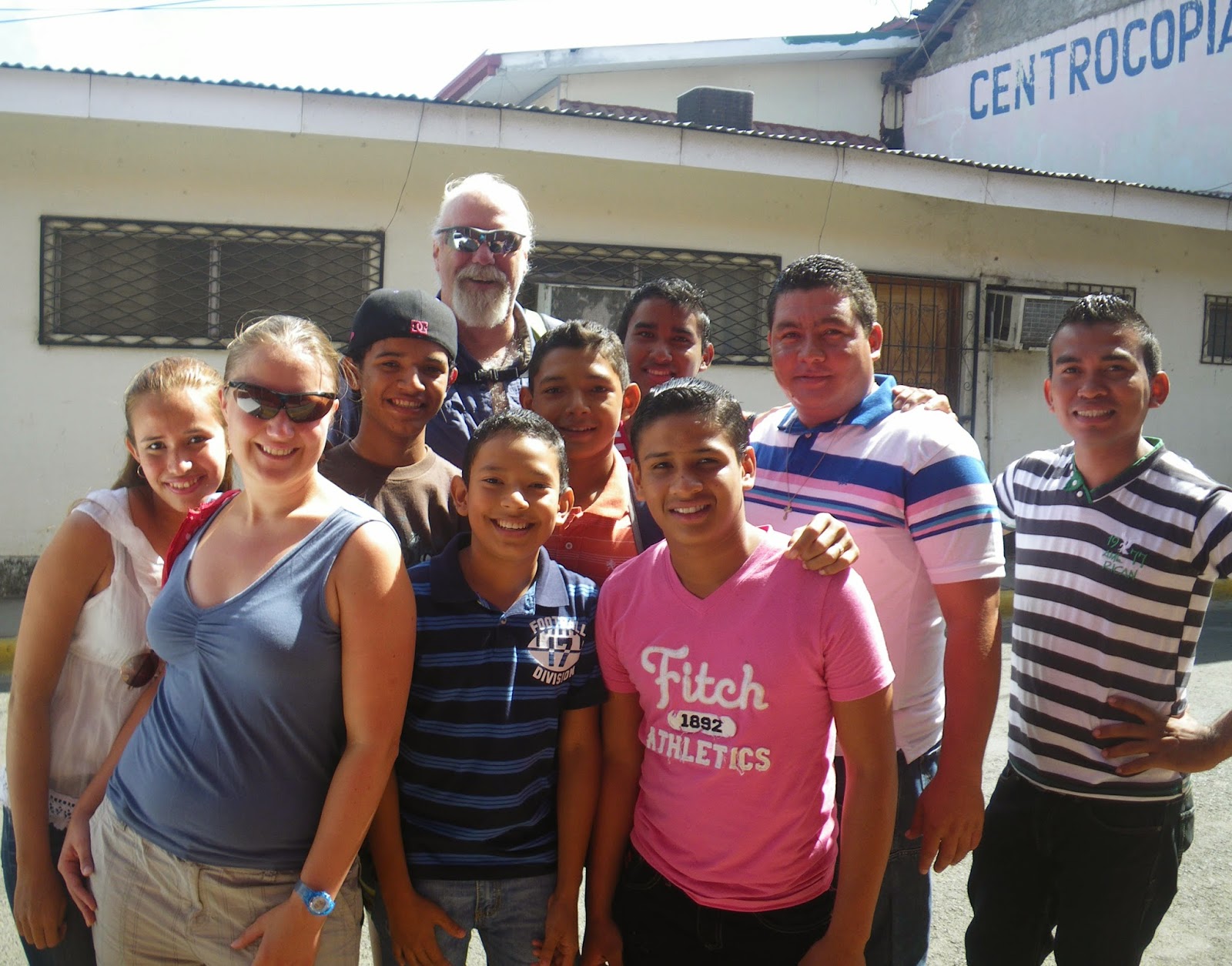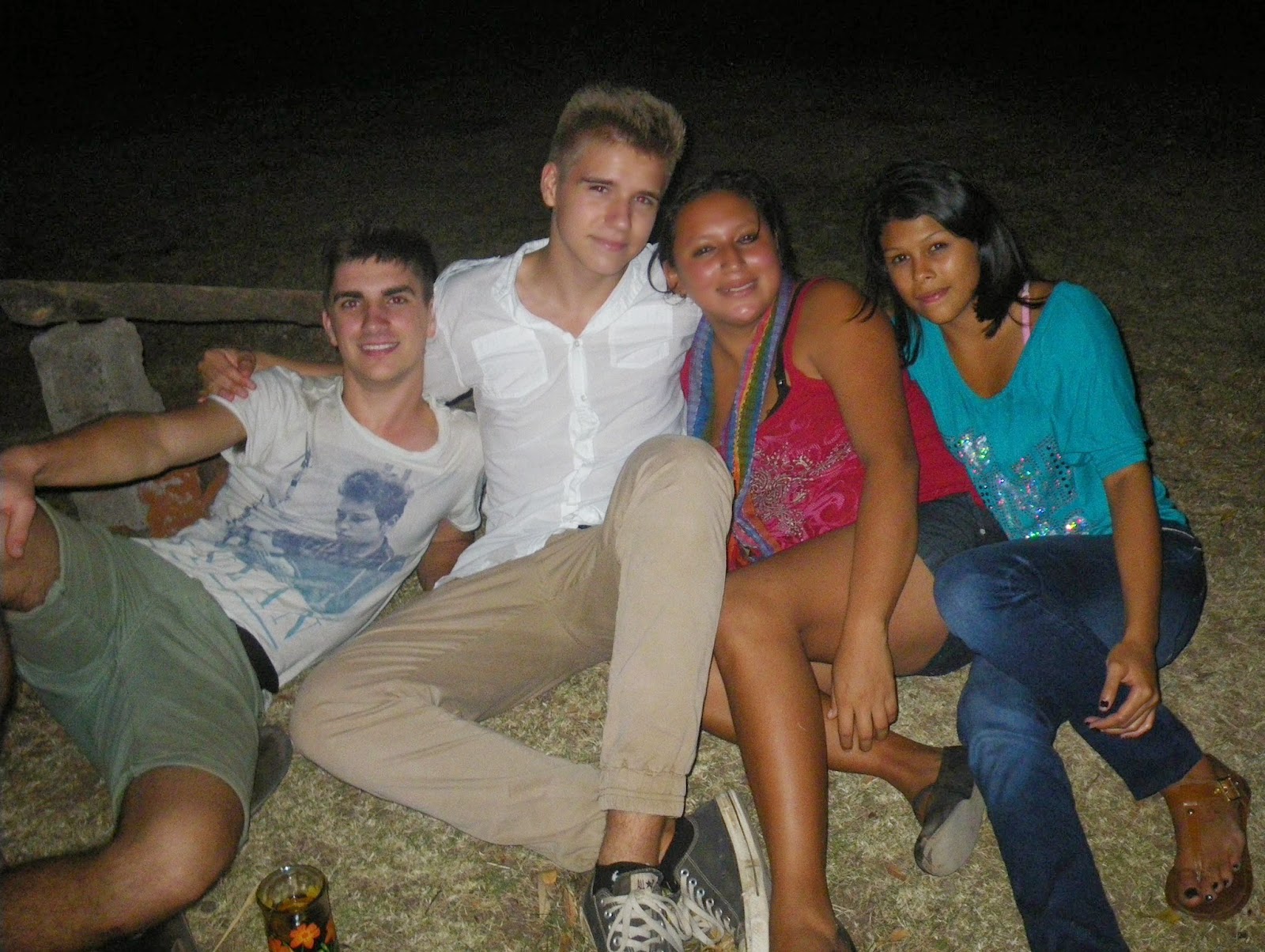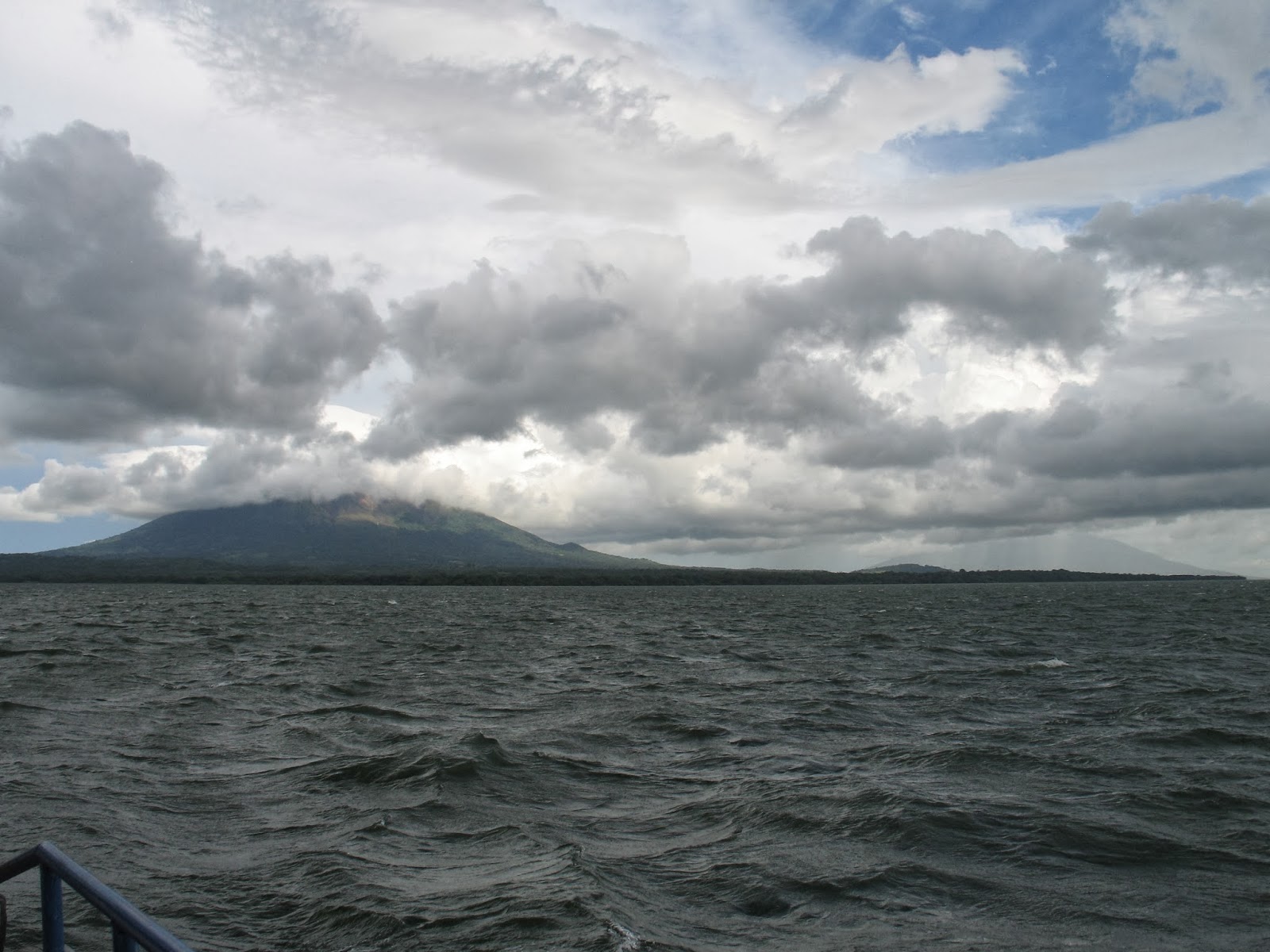Quick review:
We're back on Isla de Ometepe, in Merida. Decided to return to teach English in the community for a full school year, so we'll be here til December. We've covered our trip back north from Costa Rica, shopping in Rivas and our travels back to the village.
Here we go!!
As we unloaded our bags into our room at Hacienda Merida, it wasn't long before we were welcomed back… by a scorpion. Kill Numero Uno in the books. Hooray. Got one the next day, too. Double hooray. It seems the wildlife of Ometepe was welcoming us back as much as the people were!
We received a heartfelt welcome from our friends as we were asked many times if we were really staying for the entire year. I guess they wanted to make sure we were serious about it! There was a teacher who came last year and had said he would stay for the year but he bailed after 5-6 weeks, so they had been let down before. Heck, we still get raised eyebrows when we talk with people here, locals and tourists alike, and tell thm we're here for the school year. We've received a lot of support and love, from the village and from back home, which makes being away from family and friends palatable. Barely.
Hacienda Merida had a much different vibe to it this time of year. On our first stint here in the fall, the hotel was a ghost town, a handful of tourists and occasional groups of backpackers staying a night or three. Lots of space in the common area for us to spread out and plan lessons. Plenty of seating during meals. You could introduce yourself to new folks - or not, depending on your mood. This is when we met Aaron, Jackie and their boys, from Montana. Great people - miss them! Plenty of hammocks available, too. Oh, there were spikes when the place got busy. Mostly, it was pretty quiet.
But in February, start of the 'high season'? Damn! The hotel was packed almost every night. In fact, at times they turned people away and sent them to other hotels/hostels in the area. Business was good! It was hard to concentrate on lesson planning when we were surrounded by travelers from all over the world, with many different languages being spoken, often all at the same time. There were a lot of interesting people and we made the acquaintance of many of them. It's one of the highlights of this journey.
I've spoken of the road to Merida and how bad it is. And here I am telling you that tourists were filling the place every night. Both are true. During the high season, there are more people visiting the island and so there is more likelihood there will be travelers who are willing to come to Merida, San Ramon, Tichana, even though it takes some time on a crappy road to get here. The high season is short, however, and when tourism slows and the road gets worse with the rain, tourists stay on the north side of Ometepe where it's easier to get around. That is what the road project will do for the people who live and work on the Maderas side of the island: easier access means more year-round business.
Anyhoo...
We spent the first week planning out our schedule and piecing together a curriculum for each class we wanted to teach. Like I said, the wife loves spreadsheets. We also had some time to reacquaint ourselves with the area. A good part of this time was spent on or in the lake. We kayaked over to Monkey Island to say 'Hola' to the capuchins that reside there. It was pretty easy paddling out of the bay but when we got around the point where the little islands are located the wind was blowing hard. Good sized waves ahead! We kept going, keeping the bow into the waves as best we could. We got to the island and were greeted by a bunch of primates! It was tough keeping the kayaks from blowing into the rocks, so holding a good safe position occupied us and made getting pictures difficult. The technique I used was to paddle into the wind, drop the paddle, grab the camera and snap pics as the wind pushed me past the island, all while trying (hoping) not to swamp my craft. I made two passes and this is the best shot I got!
 |
| "You didn't bring any food!?? What the hell?!" |
No, we weren't looking for a place to buy (at least not yet). We were looking for the house we had arranged to rent for the year. We knew only that it was a short distance from the hotel, it was being remodeled and it was on the lake. We knew the general direction to go and figured it couldn't be too hard to spot - we were correct!
 |
| Casa de Profesores at Playa Gringo |
We paddled to shore and introduced ourselves to the contractor, Hamilton, and his crew. He gave us the quick tour and told us the house would be ready in a couple of weeks. Exciting times for us! The place was much larger than we thought it would be. A couple of bedrooms, a kitchen with a two-burner cookstove and a refrigerator (a real luxury for this part of the country, to be sure), a bathroom with sink, toilet and shower, and a small room next to the kitchen, as well.
 |
| A real honest-to-goodness bathroom!! Will be all tiled when finished. |
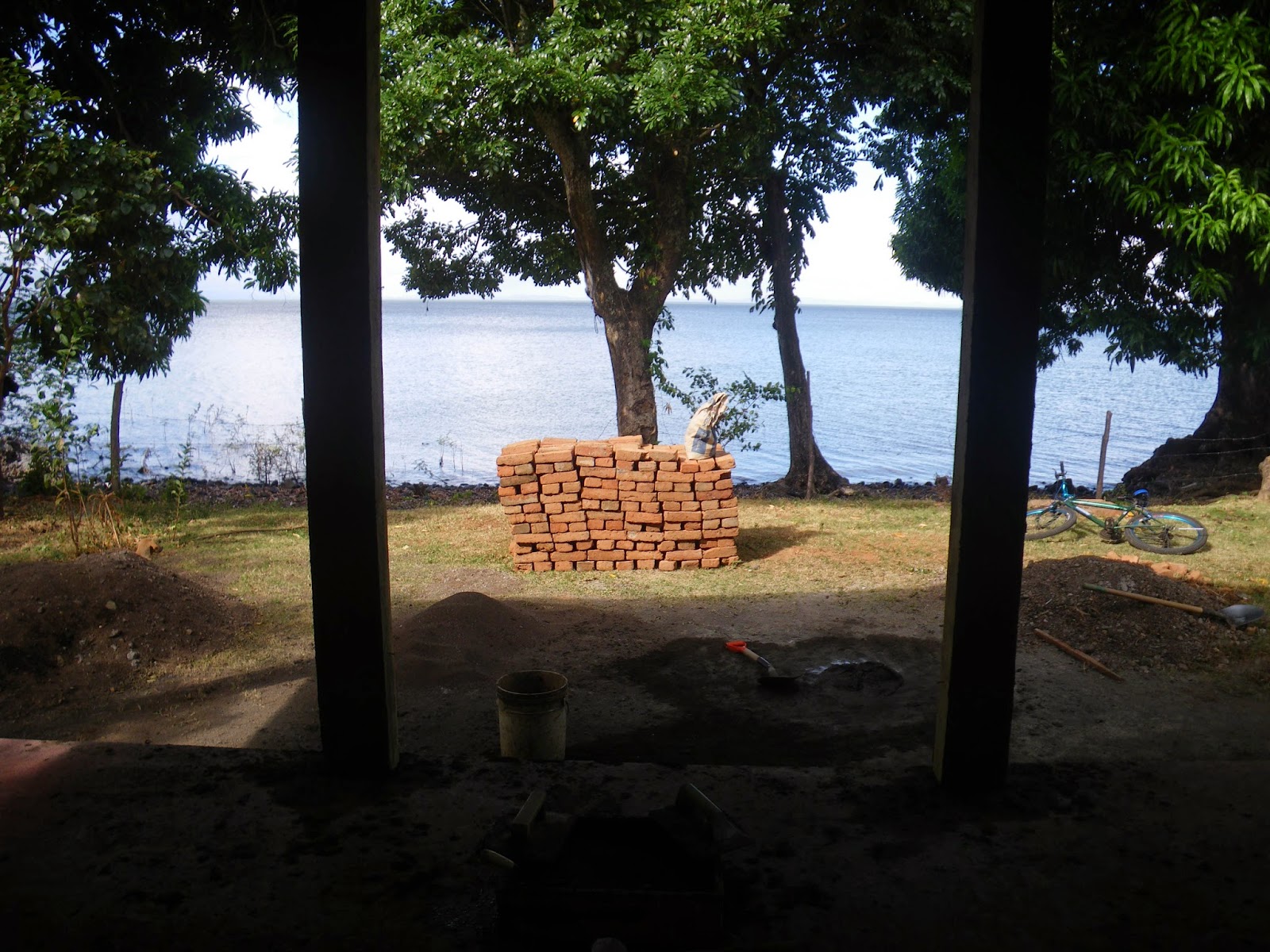 |
| The view from our 'office' (porch) doesn't suck |
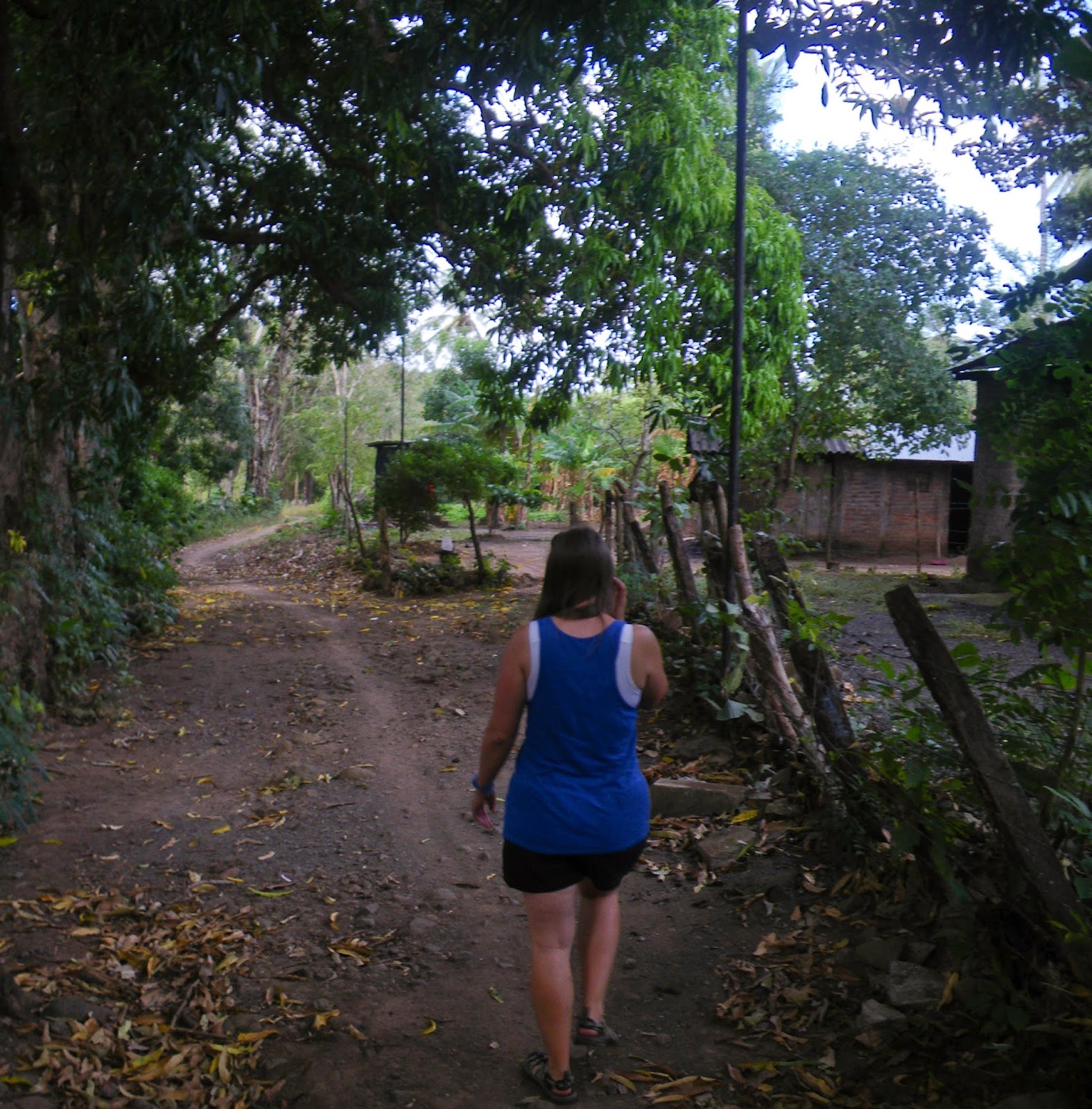 |
| The very first walk up the trail from our house! |
 |
| "Head down the trail, last house on the left. If your feet get wet, you went too far." |
When we weren't kayaking and planning, we swam - every day, enjoying the cool water during the heat of the afternoon. When we were dry, we continued school planning and meeting new people and spreading the word about classes. The response from potential students was positive enough that we decided to start classes the very next week.
Yoinks!™ (Yoinks! is a trademarked term and may only be used with express written permission from Judy Taylor, Inc.)
Life here in paradise was pretty excellent. And after long days of swimming, kayaking, working on teaching stuff, reacquainting ourselves with Toña and mingling in the community, we enjoyed spectacular sunsets in the village that would be our new home for the coming year.


